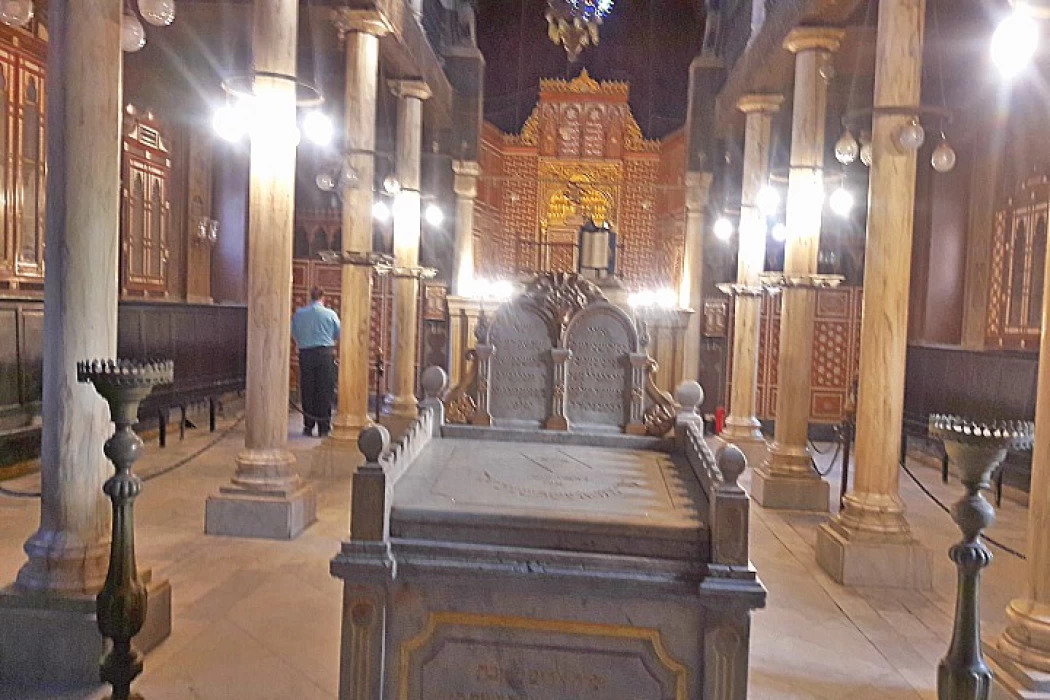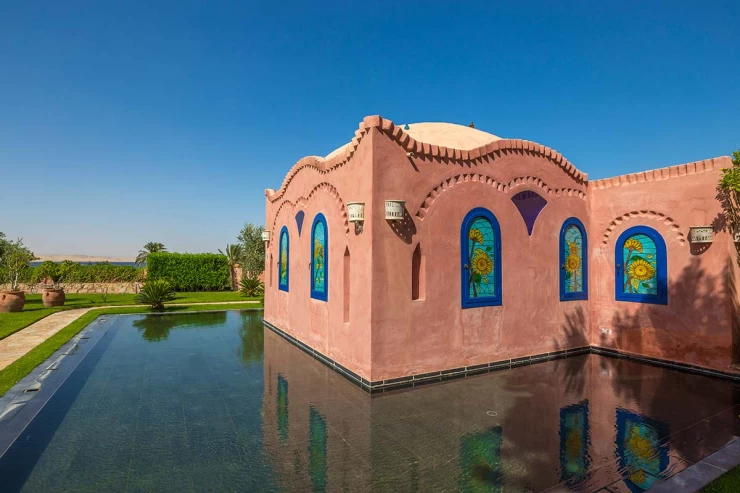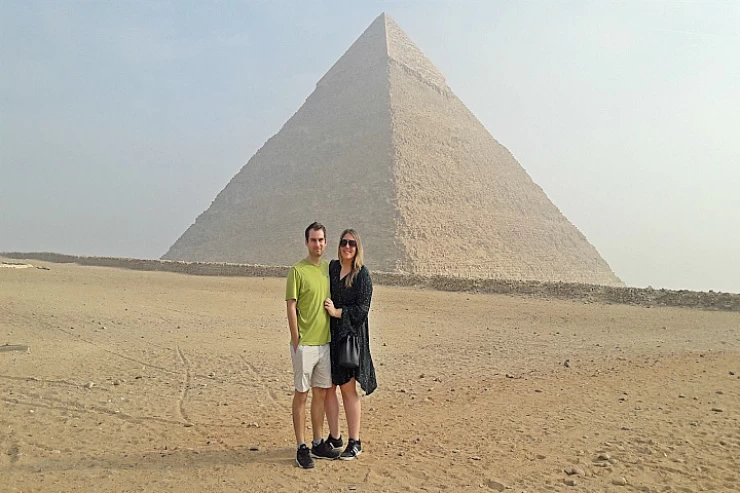
Ben Ezra Synagogue
Ben Ezra Synagogue and Coptic Cairo: A Tapestry of Faith, History, and Architecture
The historic district of Old Cairo maintains a powerful position within its centre because it shares spiritual heritage insights that cross all religious boundaries. Historic Coptic Cairo exists as a place that contains numerous religious sites, including Jewish, Islamic, and Christian monuments that showcase the ancient nature of the multicultural city. The Ben Ezra Synagogue stands as the most notable attraction because it symbolizes Egypt's former Jewish population while showcasing sacred historical narratives between different cultures.
Coptic Cairo: A Cradle of Christianity
Coptic Cairo, known as Misr Al-Qadima, displays one of the world's oldest Christian populations in the urban district that was formed before Islamic Cairo. From the time before it served as an Islamic capital, the city centre functioned as the Babylon Fortress, which was ruled by Roman and Byzantine powers. Religious sites together with monasteries and historic churches, exist today in the oldest Christian community on earth.
Origins and Historical Significance
Coptic Cairo, known as Misr al-Qadima, retains its historical identity as an area that existed before Islamic Cairo, thereby protecting a worldwide Christian community dating from ancient times. This section of the city grew into Babylon Fortress before Islamic rule made Cairo their capital. The location now contains Egypt's most historic religious establishments, including ancient churches as well as monasteries.
The Babylon Fortress
History records the Babylon Fortress as a Roman military construction that was built within Coptic Cairo during the 2nd century AD. During its history, the fortress functioned as a military base for strategic purposes before serving as an important centre for Egypt’s early Christian tenants. Visitors can see robust fragments of the fortress walls and towers at the site, which set an awe-inspiring stage for numerous churches and monasteries in the area.
Ben Ezra Synagogue: A Jewel of Jewish Heritage
A modest place of worship known as the Ben Ezra Synagogue finds residence behind stone walls, while palm trees provide its shade. The Ben Ezra Synagogue exists only a few minutes’ walk from the Hanging Church, while tour programs of Coptic Cairo emphasize the religious variety of the district.
Historical Origins
Historical records show that the synagogue started as a Coptic Christian church, which was sold to the Jewish community to pay off a Muslim-imposed tax from 882 AD. The Jewish population of Egypt found their spiritual and cultural centre at the Abraham Ben Ezra synagogue after it received its namesake from this eminent Jewish figure.
Jewish worship has existed at this site for more than a millennium, even though the current structure dates from the 19th century following numerous architectural changes. The synagogue building combines two regional design elements by integrating Islamic decorative motifs and Coptic components through its geometric ornamentation, marble columns, and refined wood carvings.
The Cairo Geniza
The Geniza storage area of the Ben Ezra Synagogue holds the position as its most important historical artifact because it contains Hebrew manuscripts that were deemed unfit for use. Jewish tradition dictates that any document containing the divine name of God should not be discarded but should be properly stored and eventually buried.
Scientists examining the Ben Ezra Geniza uncovered more than 300,000 manuscript fragments that originated from between the 9th and 13th centuries during the late nineteenth century. The Cairo Geniza represents thousands of historical documents, which include religious texts together with personal letters, legal contracts and commercial records that provide exceptional knowledge about medieval Jewish daily life in Islamic culture.
Solomon Schechter, as a scholar from Cambridge University, made this discovery globally known by understanding the value of the manuscripts found within the Geniza.
Architectural Highlights
The synagogue features an architectural fusion of artistic elements that blend perfectly. The synagogue presents several noteworthy characteristics within its compact structure that stands smaller than most other religious buildings.
The bimah (pulpit) stands at the centre of the building, while the Aron Kodesh (holy ark) is set against the eastern wall and faces Jerusalem.
The main structural element stands as the Aron Kodesh (holy ark), which faces Jerusalem with sophisticated carvings built into the eastern wall.
Traditional Jewish worship requires gender separation through the attached women’s gallery, which is reachable only by a staircase.
The interior maintains a peaceful atmosphere through its well-lit arched windows with stained glass that cast illumination upon the aged stone floor.
A Meeting Point of Faiths
The position of the Ben Ezra Synagogue near Christian houses of worship and Islamic buildings at that time reflects a historical moment when faith communities joined forces for cultural sharing. The history of Coptic Cairo manifests as a period of overall peaceful coexistence despite intermittent religious tensions that surfaced during specific periods of foreign wars and governmental disruptions.
Muslim scholars maintained close collaboration with their Jewish and Christian colleagues at the time by conducting text translations and philosophical debates while taking part in the active intellectual scene of medieval Cairo. Maimonides, together with other Jewish philosopher-physician figures, made their home and practice in Cairo as they contributed to its expansive cultural environment.
The Decline and Preservation of Jewish Cairo
The establishment of Israel in 1948, when combined with the Suez Crisis of 1956, promoted the decline of Egypt's Jewish community while causing mass migration of its surviving members. The current Jewish population in Egypt counts its members in the tens, while the Ben Ezra synagogue operates mainly as a monument for visitors to observe rather than practice religion.
International organizations, together with the Egyptian government, work toward preserving both the Ben Ezra Synagogue and additional Jewish heritage structures. Maintenance work conducted on the structure turns the synagogue into a tourist destination where people from diverse cultural backgrounds explore Egypt's history of multiple faiths.
Coptic Cairo Today
The district of Coptic Cairo continues its life as an active community where practicing Christian groups can be found along with operating churches and monastic institutions. Tourists flock to Coptic Cairo because they want to study its religious background, cultural practices and architectural landmarks. The Egyptian government recently enhanced both tourism infrastructure and security in this area to raise cultural tourism and safeguard these precious historical sites.
The Coptic Museum near Tahrir Square showcases Christian art and manuscripts and artifacts that enhance knowledge of the historical spiritual traditions of this region. Through its vast collection, the museum helps visitors understand how Egypt combines religious components with cultural elements in its cultural landscape.
Coptic Cairo, along with the Ben Ezra Synagogue, serves as an active historical landmark that represents human beings' eternal pursuit of divine encounter while providing sacred spaces to embrace it.
In the Old City of Cairo, the Ben Ezra synagogue is perhaps the most famous Jewish house of worship in Egypt and an important historical monument. Again, Coptic Cairo is near not only expelled slums but also works of art such as the Hanging Church of the Virgin Mary and the Coptic Museum. And over the years they have made it nice to the Ministry of Tourism and Antiquities of Egypt, who restored the synagogue several times already. Nowadays, it is still one of the places included in a day tour in Cairo, accessible to local and foreign tourists interested in its historical background.
Moreover, one of the most important elements of the Ben Ezra Synagogue is the Cairo Genizah, which offers the life history of the Jews in Egypt for the past 850 years in the form of a very rare collection of records. These records, which comprise the Genizah, house precious archival material on the history of the community’s daily life, its trade, religion, and mild manuscripts like family pictures and court documents. This raw material has been made accessible by various scholars in the course of research in numerous libraries all over the world, making good research on the Jewish civilization. Together with the historical materials, the Genizah became an object of interest for many historians and tourists, thus enhancing the image of the synagogue as one of the obligatory places to visit in Coptic Cairo.
The word “synagogue,” which refers to a house of worship, education, or gathering, is derived from the Greek language, where it means mingling’ or ‘coming together’. The significance of the Ben Ezra Synagogue, both in history and spirituality, is linked to its central position in Old Cairo to the Nile River. This, however, goes by most of the traditions, being the very location where the Pharaoh’s daughter was said to have found the little Moses, who was set adrift in a small boat down the river. It is this sacred bond that enhances the beauty of the synagogue, incorporating its history with the tales from the Torah and the Christian Bible as well.
The name "Ben Ezra"
The synagogue is named after the Jewish scholar and philosopher, Abraham Ben Ezra, who purchased the property in 882 AD. At the time, it is said to have originally been a Coptic church that was sold to raise funds required by the ruler, Ahmad Ibn Tulun. After its acquisition by Ben Ezra, it was converted into a synagogue, and over the centuries, it has become a prominent place of Jewish worship and learning. For visitors exploring Cairo, the Ben Ezra Synagogue offers a unique opportunity to connect with an often-overlooked aspect of Egypt’s diverse religious landscape.
The existing edifice of the Ben Ezra Synagogue was constructed in 1892 as a result of the preceding structure caving in. Its architecture is of the basilica pattern, which has a rectangular shape and two levels with a sectioning for ladies and gentlemen. The interior space of the synagogue is well known for its detailed and elaborate carpets, exquisite wooden doors, and marble tiles, all combining unique Jewish and Middle Eastern arts. The traditional Jewish laws state that within any synagogue, the Torah ark is Eastern facing, and the beautifully carved eternal abode of the scrolls of Torah, gazes East, more so Jerusalem.
An interesting and perhaps surprising feature of the synagogue is the rich carvings that cover the surfaces of the walls in almost all the rooms and that draw beautiful floral and geometric designs. Some Kudine robots were stored at the Jewish Community Center since renovation works were carried out in the 19th century, which also shed opened indiscriminately in the South African communities, where so-called Genizah’s of the Turkish Synagogue preserved natural historical monuments, especially such sacred temples.
A Window into Egypt's Diverse Religious Heritage
Exploring the Ben Ezra Synagogue not only helps in understanding two aspects of the Jewish culture in Egypt but also the attitude towards the places of worship in Egypt towards keeping them intact. As the temples of Luxor and Aswan, this synagogue is an example of how the country can protect its religious and cultural pluralism. The synagogue is silent yet articulate at the same time, an embodiment of the significant presence of the Jews in Egypt over the centuries, and as such holds importance for people wishing to explore the rich and diverse history of the country.


















